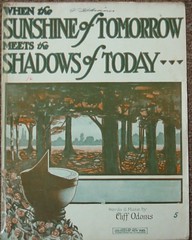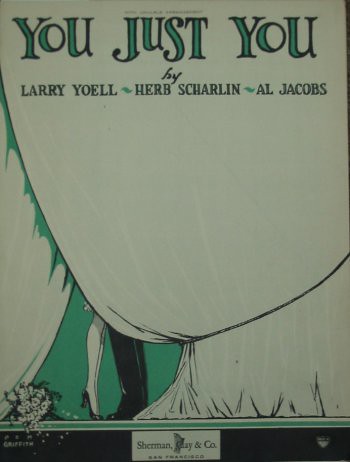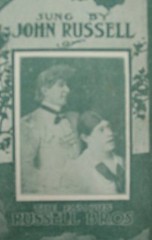Sing, Katie (but Leave The Piano Alone)
Thousands of pages of music, and I can't read a note. Nope, I'm just not a musician, despite my earnest middle school attempts to play the clarinet. Now that I've ceased contributing to noise pollution, what appeal could a music library hold for the likes of me?
Plenty, really; probably even more than if I were just seeking the trombone part for "Caravan." A lot of the music at the Paramount library is in the form of sheet music for solo piano, often with lyrics for the capable and/or uninhibited to vocalize. Sometimes guitar or ukulele tablature peppers the sheet, which won't necessarily be an exotic tune to warrant this instrumentation. This kind of music is usually bound with an eye-catching illustrated cover, and often some hyperbolic music publishers' claims adorn the inside or back covers: 1913's "Ecstasi" is promoted as "[t]his is the number that put the 'tang' in tango;" "Quiéreme Mucho" (1931) is to be regarded as "the logical successor to 'Amapola,'" in case you were seeking that. It's often crass, nearly always middlebrow, and more fun than a barrel of banjoleles. It's music for amateurs.
Even as the phonograph and the radio lost novelty and achieved necessity in American households, people still liked having sheet music around, it seems. As noted before, the Paramount library has sheet music published well into the Eight-Track Era, by which time you'd think we had surrendered music-making entirely to professionals. Maybe we just wanted to pretend we were musicians, just as many people kept parlor pianos or a music room, even though nobody played.
And how was your taste assessed when you brought some of these titles from your piano bench?





